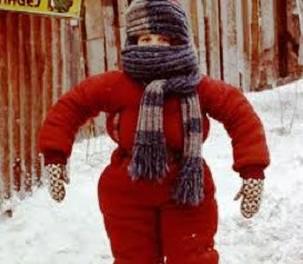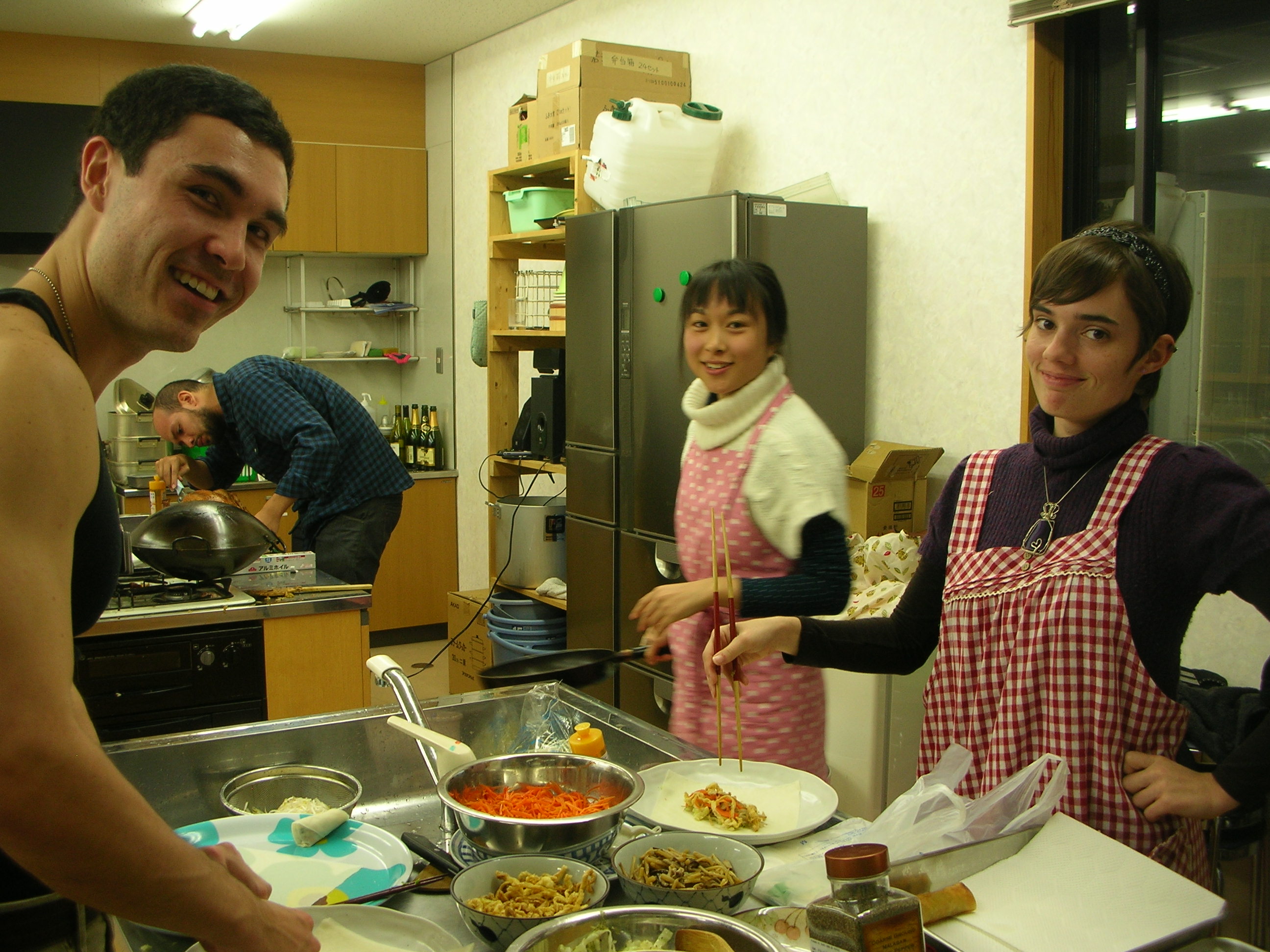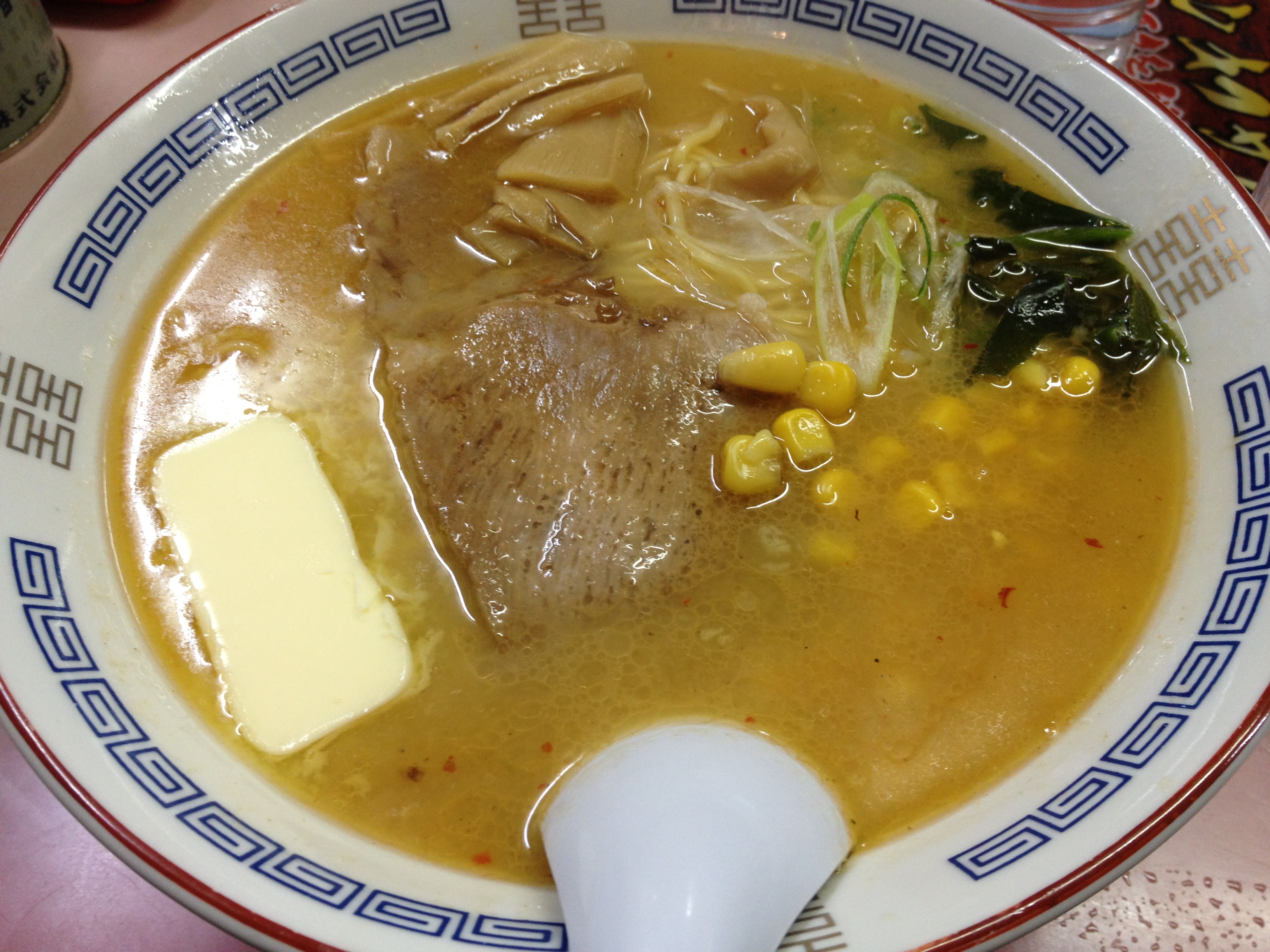A Canuck’s Guide to Staying Warm
Â
Fall is in full swing in Japan. Finally we have been released from the insufferable temperatures and now can enjoy the beautiful colours of the changing leaves and innumerable varieties of sweet potato and pumpkin flavored foods. However, as October turns to November, and November to December, we are faced with another climate related challenge: the cold.
Depending on our home country, we all have different base levels of cold tolerance. However, this doesn’t mean some of us don’t feel the cold. Just like how Australian JETs still found it hot in summer, Canadian JETs still find it cold in winter. This all boils down in my opinion to one important cold fighting feature that most (if not all) Japanese houses are missing: insulation, with central heating coming in at a close second. Remember that even though I’m from Canada, the inside of our houses are not the same temperature as the outside in the winter so we’re in as much misery as the rest of you.
I personally hate being cold, despite coming from the Great White North. To combat this, I have some tips and advice for staying warm without breaking the bank on heating costs. Obviously winter temperatures vary greatly across Japan and some techniques might not be doable in some situations, but hopefully this guide will provide the advice you need to stay toasty this winter.
The first thing to keep in mind is that it’s easier (and cheaper) to heat yourself than it is to heat a whole room. So first and foremost, layers! When layering, start with an under layer. Grab all the heat tech and long johns you can get your hands on. Women’s leggings or multiple layers of tights work similarly. This will keep a warm layer close to your skin. Second, add on as many shirts and sweaters as you need for your situation and desired temperature. Finally, if you plan on going outside add a wind/water-proof layer to stop the wind from leeching away your heat.
Pay special attention to your extremities, including your hands, feet, ears, and head. When these areas are cold, even if your core is warm, you are going to feel cold. It is a myth that you lose the most heat through your head (you actually lose it equally from any exposed body part), but if you’re bundled up but leave your head bare, then it will become the place that is losing the most heat. Wearing a hat around the apartment and when you go to bed may feel a little silly but can make a big difference. Same goes with socks: wearing a nice thick pair (or multiple pairs) puts a barrier between you and the cold floor and goes a long way to keeping you warm.
Something to remember about layering is to not layer too much. Although exercise is a good way to warm yourself up (and I would definitely advise not sitting in one place in a cold room for too long), sweating is something you really want to avoid. The purpose of sweat is to cool you down, and when you’re in layers it will make your inner layers damp, which will quickly drop your temperature below a comfortable level. With this in mind, try to avoid having cotton material next to your skin. Cotton dries slowly and will hold any sweat you do have against your skin. Furthermore, loose clothing will actually insulate you better as it lets warmth circulate around your body more; blankets have the same effect.
 Japan also has many additional methods of keeping yourself warm in the winter. First is hot water bottles (there’s a whole NHK Japanology special on them!), great for either having on your lap or under your feet while you work or as a bed warmer. Hand warmers are a life saver if you have to stand out in the cold or when your hands get chilled from typing away at a keyboard. Don’t have any? Stick some rice in a clean sock, put it in the microwave and BAM! Instant warmer! If you’re really crafty you can sew one together with rice, barely or other grains, and add things like lavender or essential oils to make them smell good. And finally, hairdryers. For drying your hair (cause wet hair will definitely cool you down) and as instant heat on cold parts of your body.
Japan also has many additional methods of keeping yourself warm in the winter. First is hot water bottles (there’s a whole NHK Japanology special on them!), great for either having on your lap or under your feet while you work or as a bed warmer. Hand warmers are a life saver if you have to stand out in the cold or when your hands get chilled from typing away at a keyboard. Don’t have any? Stick some rice in a clean sock, put it in the microwave and BAM! Instant warmer! If you’re really crafty you can sew one together with rice, barely or other grains, and add things like lavender or essential oils to make them smell good. And finally, hairdryers. For drying your hair (cause wet hair will definitely cool you down) and as instant heat on cold parts of your body.
Moving on now to what you can put in your body to stay warm. Good news: being well fed keeps you warm! We tolerate cold better when we are full and well hydrated. A drop in your blood sugar can also bring your temperature down.
Here is a list of some foods that can help keep you warm this winter:
Ginger
Cinnamon, cumin, and other spices
Whole grains
Oatmeal
Hot chocolate
Sweet potatoes
Squash
Walnuts and/or avocados (both have healthy oils)
Chili
Caffeine
Cooking (or baking if you have the luxury) will also heat up your house. Remember how you avoided cooking in the summer because it made your apartment that much warmer? Well now is the time to make up for it! You have to eat anyway so you’re not spending extra money to create the heat. Be careful, however, of dishes that need or create a lot of steam; like with sweat, you don’t want things to get damp, especially since anything that’s left damp will freeze if you’re not careful.
There is some bad news though: you’ll want to skip the hot toddies. Alcohol, though in the short term makes you feel warmer, actually drops your core temperature, which could be dangerous after one too many at a nomihoudai. I’m not advising you to stop drinking all together, just be aware that when you’re shivering, it’s best to be avoided.
Finally, here are some things you can do to your home to keep the warmth in and the cold out.
Try to prevent drafts by putting towels under drafty doors and windows. You may also be able to find adhesive strips you can put on window edges to stop drafts. You can use a clear shower curtain or piece of plastic to cover windows to let light in but keep the cold out. Adding heavy curtains will also block drafts from entering your apartment, though they’ll also block the light, which isn’t always something you want during the long months of the winter.
Putting rugs and/or mats down will help you avoid the cold bare floors which can steal away your heat when standing or sitting on them, and if you’re really lucky you might have a heated floor mat. Close off rooms you don’t use to warm up the ones you dom faster and save money. Candles, despite their size, will give off quite a bit of heat, and add a nice smell and atmosphere to the room. Be careful not to leave them unattended. Finally, when layering your bed with blankets and whatever else you can find to make a warm comfy nest, keep fluffy blankets close to you and thinner and denser blankets on top to block the cold air.
 Hopefully these tips will help you cope with the upcoming cold weather without burning a hole in your bank book. The key is to follow the scout’s motto and be prepared for whatever type of winter weather your area will throw at you. Some of us will adjust, and some of us not so much. As much as you might want to hide away all winter rather than braving the outdoors, being social and taking advantage of heated buildings is much better than becoming a hermit. Best of luck to all of you! Stay toasty!
Hopefully these tips will help you cope with the upcoming cold weather without burning a hole in your bank book. The key is to follow the scout’s motto and be prepared for whatever type of winter weather your area will throw at you. Some of us will adjust, and some of us not so much. As much as you might want to hide away all winter rather than braving the outdoors, being social and taking advantage of heated buildings is much better than becoming a hermit. Best of luck to all of you! Stay toasty!
Emma Wicks







